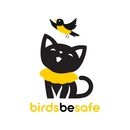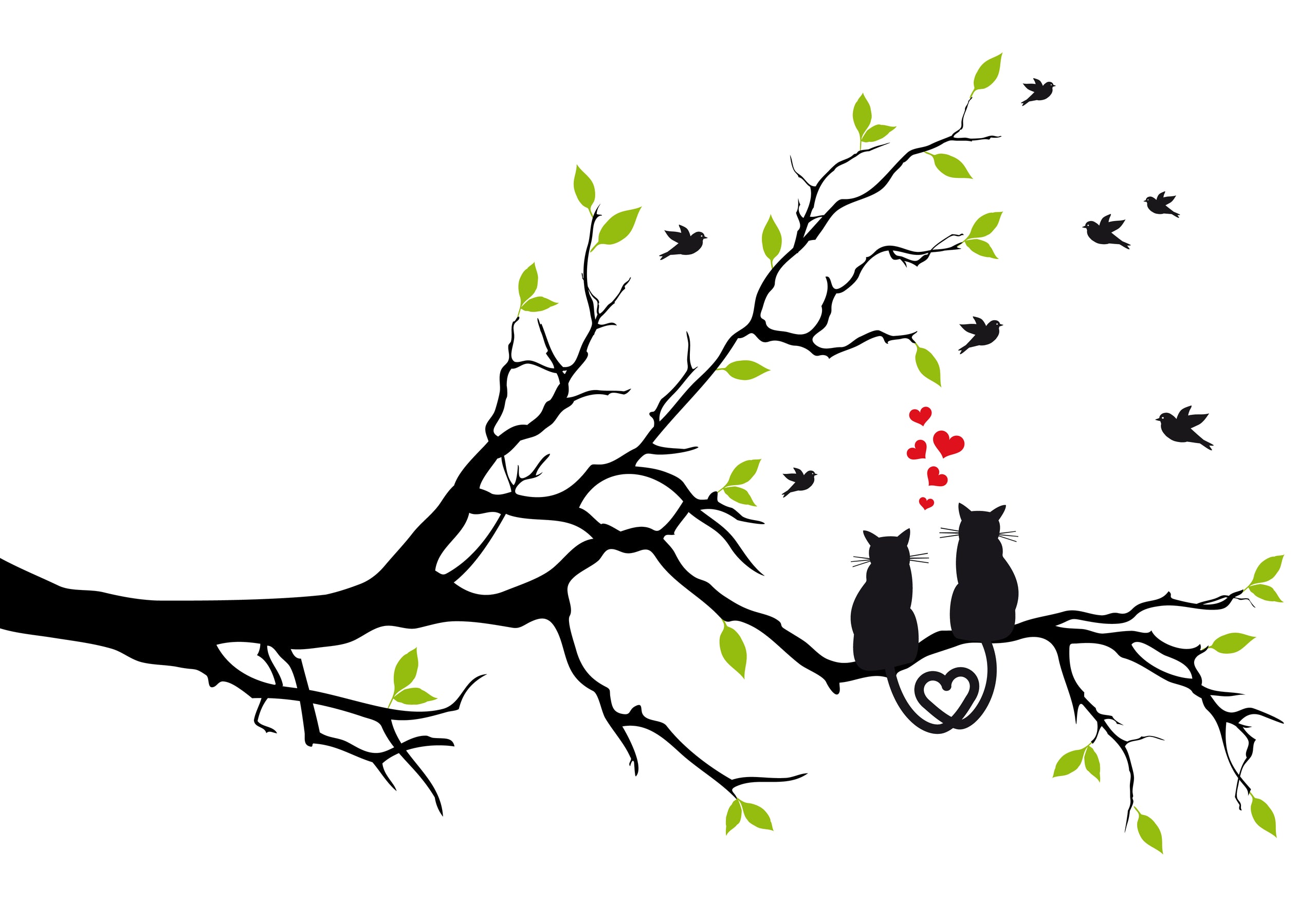United States' Field Study of Birdsbesafe® Collar Covers
Background
Dr. Susan Willson, an associate professor of bird biology at St. Lawrence University, formally field-tested the Birdsbesafe® device beginning in 2013. The independent field study used a research team at St. Lawrence University in Canton, New York and cat-owning volunteers from the community. Their two-season field study measured the effectiveness of the predation-control device, Birdsbesafe® cat collar cover, when used by pet cats in the region.
The patented Birdsbesafe® cat collar cover is designed as brightly colored neckwear for a hunting cat to wear, when outdoors, making the cat more easily seen by birds it stalks. Birds, which have exceptional color vision ability, can see the stealthy cat better and tend to fly away. The study was designed to test the efficacy of the popularly marketed anti-predation device.
The scientific study’s results were published in the Global Ecology and Conservation Journal (GECJ) in January 2015 as an article entitled “Birdsbesafe: Can a novel cat collar reduce avian mortality by domestic cats (Felix catus)?” by S.K. Willson et al.
The authors concluded that the "study clearly demonstrated that the Birdsbesafe® CC [collar cover] is effective at reducing bird mortality by domestic cats." In addition, the authors called the Birdsbesafe cat collar cover "highly effective" as a conservation tool.
Here are more details with a focus on the results solely related to predation on birds, the only type of predation that the Birdsbesafe® device limits. For more explanation of how and why the Birdsbesafe® cat collar works to protect birds, generally, see elsewhere on this website.
Methods
The research team enlisted the help of New York–based volunteers who owned cats that were routinely let outdoors. The cats were all described before testing as cats that hunt, as a pre-qualification for being in the study. The researchers examined the captured prey returned home by cats wearing the collar cover for two 12-week periods of fall and spring.
The participants were randomly divided into two groups. In two-week intervals, each group alternated between the cats wearing the collar cover and the cats wearing no collar at all. This alternating pattern limited the impact of non-Birdsbesafe–related factors, such as specific prey availability, weather, or other variables.
Results
Cats captured and returned home with between 3.4 x (fall portion of the study) and 19 x (spring portion of the study) fewer birds when wearing the Birdsbesafe® cat collar cover.
Table 1. Mean Number of Birds Caught by Pet Cats in 12-week Period,
When Cats Wore or Did Not Wear Birdsbesafe® Collar Covers*
|
|
Fall |
Spring |
|
Birdsbesafe® |
0.13 |
0.05 |
|
No Birdsbesafe® |
0.44 |
0.95 |
Discussion
- 87% Reduction in Birds Caught Annually When Cats Wear Birdsbesafe® Covers
Birdsbesafe® cat collar covers are generally used year-round by cat owners. Although the field study tested the product in two twelve-week periods of the year, cat owners want a good estimate of the device’s year-round protection for birds.
The year-round effectiveness was characterized in the GECJ article’s (Willson et al, 2015) “Discussion” section this way: “The average cat will kill 0.72 birds per year with the collar cover and 5.56 birds per year without a ‘cc’ [collar cover].”
Using those annualized means, one can calculate the percent reduction in birds caught by cats that wear Birdsbesafe® covers as compared to cats that do not wear it**.
Approximately 87 percent fewer birds will be caught by all cats wearing Birdsbesafe cat collar covers, in a year, compared to cats with no collars worn.
Although the research article did not directly report this percentage, it is a very clear way to present the study results for the typical year-round user of the product. The “percent reduction” is often used in other researchers’ journal articles when evaluating this or other anti-predation devices. See note below.
- Conservation Implications: “Strongly Recommended”
The scientific study had led to the Birdsbesafe® cat collar cover being described as “strongly effective” and “highly recommended” as a tool for mitigating cat predation on birds.
According to the published article in GECJ: “...the conservation implications are clear: if owners of outdoor cats choose to use the Birdsbesafe® CCs [collar covers], a significant factor in the decline of songbird populations would drop precipitously.”
- Fall and Spring: Device was Very Effective in Reducing Cat Predation on Birds
The fall and spring trial periods showed 70% and 95% reductions, respectively, in the mean number of birds caught by cats wearing Birdsbesafe® cat collar covers, compared to cats with no collars. While those rates are non-identical, the differences between the fall and spring rates may not need to be emphasized.
Here we present our Birdsbesafe company comments on why the fall-spring differences are ultimately of minor importance.
a. Fall Foliage May Have Matched the Birdsbesafe Cover in FallThe tested pattern of Birdsbesafe® cover might have too closely matched the autumn foliage palette of leaves that turn to red, yellow, and orange, against green leaves and dark/black background of branches. This particular fabric pattern may have inadvertently camoflauged the cat during several crucial autumn weeks in the study. As a result, the usual protective effect of the brightly colored Birdsbesafe® cover would be lowered. Instead of making the cat more obvious to birds, it might have made the cat less visible.
(Note: Since that time, care is taken by Birdsbesafe® company to avoid fabric patterns with this particular fall foliage color palette and pattern.)
b. Higher Rate of Capture in Spring May be Due to Availability of Birds and Good Hunting WeatherA greater number of birds were caught by cats in the spring versus the fall by cats not wearing Birdsbesafe devices: .95 birds per cat in spring versus .44 birds per cat in the fall. With the higher rate of capture by cats without Birdsbesafe collar covers, the effectiveness of the device is relatively stronger than it was shown to be in the fall period.
Better spring-time weather may have enhanced the cats’ hunting activities. The autumn testing period including unusually cold weather with early snow, not favorable to cats’ hunting.
There may have been relatively greater spring-time availability of prey, due to migration patterns. There are approximately twice as many passerines (more species and more individuals) in the northern New York area in the spring after the migratory birds arrive.
c. Fall foraging in flocks may have led to more successful hunting of birdsMany species of passerines will feed in flocks in the fall as they prepare for southern migration well after the breeding season has ended. Fall foraging in flocks is mentioned in the research article. Ground-feeding in groups might decrease the likelihood a cat will be noticed, or simply increase the likelihood that a predatory cat can make a kill.
In summary, the Birdsbesafe cat collar cover showed a strong protective effect in both fall and spring trial periods. It may be best not to dwell too much on the seasonal differences, considering the mitigating factors, but to rather focus on the value of the product year-round for bird protection.
- Functionality and Cat Acceptance was Excellent.
Seventy-one percent of participants said that their cats had no problems adjusting to the Birdsbesafe® collar cover.
Some cats did lose their cat collars during outdoor use, initially, and the choice of interior breakaway buckled cat collar brand was crucial. The brand of cat collar in the study was changed to one with better performance, as noted in the journal article. Some cat owners may have been discouraged by the initially lost products, when evaluating their satisfaction with the product.
- Feral Cat Use is Not Recommended by Birdsbesafe Company
Although the toll of feral cats on wildlife, and on songbirds, particularly, is significant and lacking easy remedy, we disagree with the study authors' recommendation to use our pet product on feral cats. Our products require some, although minimal, oversight by cat owners, some handling of the cat, and are not really a suitable product for a cat that lives outdoors, un-cared for, full-time.
Notes
* The figures used in the table are identical to the values shown in the graph shown in the GECJ article. The values were confirmed in personal correspondence with Dr. Willson.
** Calculation Detail: How to calculate the Percentage Reduction in Birds Caught:
Step 1. 5.56 – 0.72 = 4.84 to show the reduction.
Step 2. 4.84/5.56 = .87 or 87% to express as a percentage.
Calculation was validated by Dr. Michael Calver, Murdoch University, by personal correspondence.
Copyright 2016 Nancy S. Brennan, All rights reserved.















